#Inland Transportation Services
Explore tagged Tumblr posts
Text
Top Benefits of Shipping Frozen Goods with GFFCA’s Intermodal Reefer Solutions
The transportation of frozen goods requires constant temperature control to maintain product quality and safety. Whether through air freight, ocean freight, or inland solutions, GFFCA offers unparalleled intermodal reefer services designed to meet your shipping needs efficiently and reliably.
In this blog, we explore the benefits of shipping frozen goods with GFFCA’s intermodal solutions. From efficiency and cost-effectiveness to environmental advantages, learn how we help ensure your frozen goods arrive at their destination in perfect condition.
So, let’s dive in before the heat rises. Let’s talk about frozen shipping with GFFCA!
What Are Intermodal Reefers?
Refrigerated containers, often referred to as reefer containers, are essential for Shipping goods that require precise temperature control throughout the shipping process. These specialized containers are equipped with advanced refrigeration units that maintain consistent internal temperatures, preventing spoilage or damage to temperature-sensitive products.
At GFFCA, our reefer containers are powered by sophisticated temperature-control technology, ensuring reliability across all modes of transport — air shipping , ocean freight , and inland solutions. Whether you’re shipping perishable goods, pharmaceuticals, or delicate materials, our intermodal reefers are designed to safeguard your cargo from origin to destination.
Common Reefer Misconceptions
A common misconception is that frozen intermodal transportation is either unreliable or slow. However, this couldn’t be further from the truth. GFFCA’s intermodal reefer solutions combine the speed of air freight, the scalability of ocean freight, and the flexibility of inland transport to deliver a seamless shipping experience.
Let’s break down the process to show how reefer intermodal shipping works at GFFCA.
Basic Reefer Intermodal Types
When utilizing GFFCA’s intermodal reefer services, customers can choose from the following approaches based on their specific shipping needs:
Load and Cool: Fresh products are loaded into the container, and the reefer unit cools the cargo to the desired temperature during transit.
Load and Go: Frozen products are pre-cooled before loading, and the reefer maintains the set temperature as the cargo is transported to its destination.
Wait for Temperature: Frozen products are loaded into the container, and the reefer unit is monitored on-site until the desired temperature is achieved before departure.
Understanding these shipping methods helps optimize transit times and costs, ensuring the safe and timely delivery of your frozen goods.
How Do GFFCA’s Intermodal Reefers Work?
Our reefer containers operate using advanced refrigeration technology. A robust cooling system, powered by a compressor and refrigerant, extracts heat from the container’s interior to maintain precise temperature settings. These units continuously monitor and adjust the internal climate to counter external factors like ambient temperature and humidity, keeping your products safe and fresh throughout their journey.
Who Uses GFFCA’s Intermodal Reefers?
GFFCA’s intermodal reefer solutions cater to a wide range of industries. Let’s explore some examples:
1. Global Food Chains and Restaurants
Foodservice distribution is vital to the global supply chain. GFFCA’s reefer services ensure that perishable ingredients like seafood, meat, and produce remain fresh from source to destination, enabling restaurants to serve top-quality meals.
2. Grocery Delivery Services
Refrigerated transportation is critical for delivering fresh produce, dairy, and other temperature-sensitive goods directly to consumers. GFFCA helps grocery delivery companies maintain product integrity every step of the way.
3. Pharmaceutical Companies
Many medications require strict temperature control to remain effective. GFFCA’s reefer solutions provide a dependable means of transporting pharmaceuticals to distributors, hospitals, and pharmacies worldwide.
4. Specialty Goods and High-End Products
From fine art requiring climate-controlled environments to sensitive chemicals, GFFCA’s intermodal reefers offer precise temperature management for valuable and fragile cargo.
The GFFCA Advantage
With GFFCA, you get:
Global Reach: Seamlessly ship frozen goods across continents with our integrated air, ocean, and inland solutions.
Efficiency: Reduce transit times with our strategically planned intermodal routes.
Cost-Effectiveness: Optimize your shipping budget with competitive rates tailored to your needs.
Sustainability: Lower your carbon footprint with eco-friendly transportation options.
Conclusion
From the fresh produce in your fridge to the medicine in your cabinet, many of the goods we rely on daily have traveled in a temperature-controlled container. GFFCA’s intermodal reefer solutions ensure these products are transported safely, efficiently, and sustainably.
As global supply chains expand and the demand for temperature-controlled logistics grows, GFFCA remains committed to providing top-tier frozen shipping services. Ready to elevate your refrigerated shipping game?
Contact GFFCA today! Let’s keep your goods cool all the way to their destination.
#logistics company in canada#freight international services#logistics company#freight forwarding solutions#Inland Transportation Services#Intermodal Transport Solutions#Inland Services Canada#Reefer Cargo Solutions#ocean freight services in Canada#Ocean Freight Forwarders Mississauga
0 notes
Text
Shipping Company in Trivandrum
Giomacs shipping services is one of the best shipping company in Trivandrum. The company provides the best quality of services in Trivandrum. The team of the company offers logistical operations and vessel handling too. Giomacs shipping is also known as the best shipping company in Trivandrum.

Giomacs shipping helps manage the movement, storage, and delivery of goods and products from one location to another. Our company provide services related to the transportation, handling, and distribution of products, either domestically or internationally.
For more inquiries : https://giomacs.com/
#shipping company#shipping services#career#air cargo#air freight#logistics#supply chain management#supplychainsolutions#supplychain#freightforwarding#sea freight#freight transportation#cargo#delivery#inland sea#transportation#transport
0 notes
Text
USA please listen to me: the price of “teaching them a lesson” is too high. take it from New Zealand, who voted our Labour government out in the last election because they weren’t doing exactly what we wanted and got facism instead.
Trans rights are being attacked, public transport has been defunded, tax cuts issued for the wealthy, they've mass-defunded public services, cut and attacked the disability funding model, cut benefits, diverted transport funding to roads, cut all recent public transport subsidies, cancelled massive important infrastructure projects like damns and ferries (we are three ISLANDS), fast tracked mining, oil, and other massive environmentally detrimental projects and gave the power the to approve these projects singularly to three ministers who have been wined and dined by lobbyists of the companies that have put the bids in to approve them while one of the main minister infers he will not prioritise the protection of endangered species like the archeys frog over mining projects that do massive environmental harm. They have attacked indigenous rights in an attempt to negate the Treaty of Waitangi by “redefining it”; as a backup, they are also trying to remove all mentions of the treaty from legislation starting with our Child Protection laws no longer requiring social workers to consider the importance of Maori children’s culture when placing those children; when the Waitangi Tribunal who oversees indigenous matters sought to enquire about this, the Minister for Children blocked their enquiry in a breach of comity that was condemned in a ruling — too late to do anything — by our Supreme Court. They have repealed labour protections around pay and 90 day trials, reversed our smoking ban, cancelled our EV subsidy, cancelled our water infrastructure scheme that would have given Maori iwi a say in water asset management, cancelled our biggest city’s fuel tax, made our treasury and inland revenue departments less accountable, dispensed of our Productivity Commission, begun work on charter schools and military boot camps in an obvious push towards privatisation, cancelled grants for first home buyers, reduced access to emergency housing, allowed no cause evictions, cancelled our Maori health system that would have given Maori control over their own public medical care and funding, cut funding of services like budgeting advice and food banks, cancelled the consumer advocacy council, cancelled our medicine regulations, repealed free prescriptions, deferred multiple hospital builds, failed to deliver on pre-election medical promises, reversed a gun ban created in response to the mosque shootings, brought back three strikes = life sentence policy, increased minimum wage by half the recommended amount, cancelled fair pay for disabled workers, reduced wheelchair services, reversed our oil and gas exploration ban, cancelled our climate emergency fund, cut science research funding including climate research, removed limits on killing sea lions, cut funding for the climate change commission, weakened our methane targets, cancelled Significant National Areas protections, have begun reversing our ban on live exports. Much of this was passed under urgency.
It’s been six months.
18K notes
·
View notes
Text

Inland transport plays a vital role in the supply chain by moving goods from ports and production facilities to their final destinations. It utilizes multiple modes, including trucks, trains, and barges, to provide flexibility and efficiency. Effective inland transport minimizes delays, cuts costs, and improves the overall reliability of deliveries. By integrating with maritime and air transport, it ensures a smooth and cohesive logistics process, crucial for meeting market demands and maintaining customer satisfaction.
0 notes
Text
Easy Shipping Everywhere | Zipaworld - Your Best Cargo Movers
Zipaworld makes sending packages around the world super simple! We're experts at moving cargo, from one place to another. With Zipaworld, you don't have to worry about your things getting lost or taking forever to arrive. Our team uses technology to figure out the fastest and safest way to get your stuff where it needs to go. And you can track your shipment on our website (Zipaworld) to see exactly where it is. Whether you're sending things nearby or far away, Zipaworld, as cargo freight forwarder, is here to make shipping easy and stress-free for you. So why wait? Try Zipaworld now and see how easy shipping can be!
#Cargo Freight Forwarder#Freight Forwarding#Logistics Services#International Shipping#Supply Chain Management#Freight Logistics#Shipping Solutions#Customs Clearance#Cargo Handling#Global Freight#Shipping Management#Freight Brokerage#Transportation Logistics#Air Freight#Ocean Freight#Inland Freight#Shipping Costs#Freight Rates#Global Shipping#Cargo Consolidation#Warehousing Services#Import Export Services#Freight Tracking#Logistics Solutions#Shipping Documentation#Cross-Border Shipping
0 notes
Text
Lädine
A Lädine is a vessel that was used throughout Europe's inland waters, but its main use was on Lake Constance. Incidentally, its little sister was called a Segmer. These vessels were used to transport all kinds of goods from the 14th - 20th century. The word "Lädine" contains the Alemannic "Lädi" (cargo, load), while "Segmer" is the ancient Greek/Roman technical term for the load of pack animals, which was reloaded onto these ships in the eastern part of Lake Constance after crossing the Bernhardino Pass.
A Lädine had a flat bottom, a square sail, oars and a wide leeward. The construction of both types was standardised, but the dimensions differed in the five countries bordering Lake Constance. The carrying capacity of a Lädine was up to 150 tonnes with a mast height of 24 metres, a length of 32 metres and a width of 4 metres. The draught was 1.17 metres to 1.46 metres, the leeboard 35 centimetres to 42 centimetres. The four types of Segmer had a load capacity of between 7 tonnes and 75 tonnes and were up to 20 metres long.

Replica Lädine St Jodok with the coat of arms of Immenstaad on the square sail.
Due to this design and their utilisation, they were no manoeuvre wonder. When the wind was calm, you either had to row, tow or punt on the shore to get to your destination. A headwind meant waiting in the harbour, as it was not possible to cross without a keel. Historical sources often contain complaints about violations of Christian Sunday rest, as people preferred to make use of the available wind rather than rowing or piling up for a long and arduous journey.
Unfortunately, they lost their significance in the course of the 19th century with the advent of steamers and the railway and slowly disappeared from service in the 20th century.
Dietmar Bönke: Schaufelrad und Flügelrad. Die Schiffahrt der Eisenbahn auf dem Bodensee. München 2013
83 notes
·
View notes
Text
The mayor of Merritt, B.C., is fed up over the fifth ER closure this year of the Nicola Valley Hospital and says he'll be sending the province a bill for the continued closures. "This has been a problem we've been dealing with quite a lot quite often," said Mike Goetz, adding that Nicola Valley's ER closed 19 times last year. "We're going to be at 41 C today. We were at 38 C yesterday," Goetz said Monday. "These are temperatures that can become dangerous. So it's really the worst possible time that our hospital could be closed." Goetz says when the ER is closed, Merritt residents who need emergency care will have to drive almost an hour to Royal Inland Hospital in Kamloops. When B.C. Emergency Health Services paramedics have to transport someone to Kamloops, that takes them out of the community for at least two hours, according to Goetz.
Continue Reading
Tagging: @newsfromstolenland
30 notes
·
View notes
Text
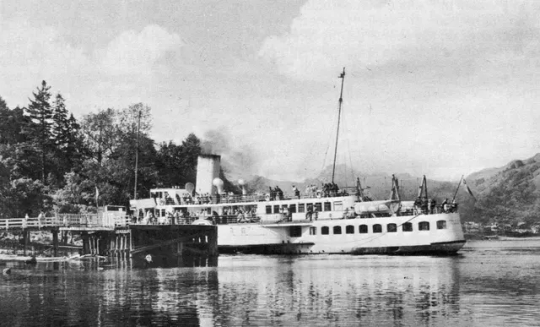


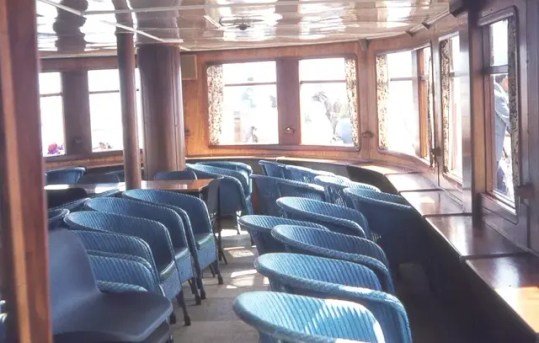



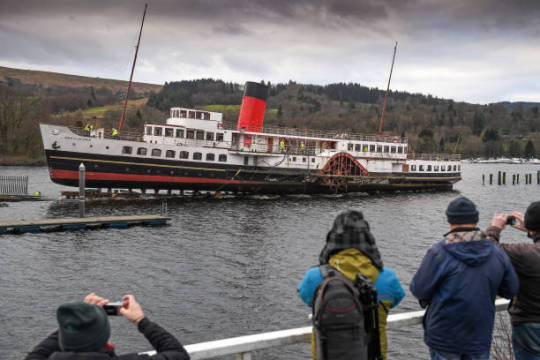

5th March 1953 saw The Maid of the Loch, the last Loch Lomond paddle steamer, lowered into the water.
On this day the historic ship left its Balloch base at 11.25am on its maiden voyage it took 1,000 passengers to Balmaha, Rowardennan, Tarbet, Inversnaid and Ardlui. For 28 years on, the Maid was known as the ‘heart’ of Loch Lomond, carrying millions of passengers, famous faces included, around the bonnie banks.
Ordered in 1950 by the British Transport Commission from A. & J. Inglis of Pointhouse, Glasgow, she was built and then cut into sections for transportation by rail to Balloch on Loch Lomond.
There she was re-assembled and was launched, almost complete, without ceremony. Her two-cylinder compound diagonal engine was built by Rankin & Blackmore of Greenock. She was painted white overall with green boot-topping, a buff funnel, and had the British Railways lion and wheel crest on her bows. In the 1975 season, her funnel colour was red with a black top. Her mainmast was removed in 1978. A service had first been initiated on Loch Lomond in 1818, and it is believed that this was the first regular passenger steamer service on an inland lake anywhere in the world.
The Maid was the twentieth paddle steamer to have sailed on Loch Lomond. She ran trials on 4 May 1953 and was named at a ceremony on 22 May, prior to a special cruise to Ardlui. The maiden cruise with fare-paying passengers took place on 25 May. Her regular route took her from Balloch to Ardlui with calls in either direction at Balmaha, Rowardennan, Tarbet and Inversnaid. From 1964, Maid of the Loch terminated at Inversnaid following the closure of the pier at Ardlui, though cruises to the Head of the Lake were also operated.
The Caledonian Steam Packet Company took over the ship in 1957, followed in 1969 by the Scottish Transport Group, and in 1970 by William Alexander & Sons - when the British Railways emblem was removed. The Maid fell on hard times as passenger numbers dwindled and the ship was eventually mothballed in 1981.
In 1992, he steamer was acquired by Dumbarton District Council and efforts to save the ship began with volunteer working parties; at the end of 1995, she was transferred to the Maid of the Loch Trust prior to the establishment of the Loch Lomond Steamship Company, a registered charity.
n 1997, her wooden deck was replaced with steel. Her lower hull was painted black, with ref boot-topping, above which the main deck sides and the superstructure remained white, but the funnel was now red with a black top. Following the restoration of the steam-powered slipway at Balloch, she was hauled out of the water in June 2006 (for inspection) for the first time since her withdrawal, as part of her rebuild - the objective of which is to return her to service.
This latest achievement was thanks to a £620,000 funding package from the Heritage Lottery Fund, Scottish Enterprise Dunbartonshire, West Dunbartonshire Council and LLSC. An internal refurbishment of the winch house, creation of a visitor interpretation facility and external landscaping is also planned.
In December 2018, the Scottish Government announced it had awarded a £950,000 capital grant. The Paddle Steamer Preservation Society also confirmed that a grant of £50,000 will still be granted, taking this working package to £1million. Funding will be spent on repairs to the vessel’s hull, creation of an education facility on board, refurbishing the main function suite and overhauling the engines to enable them to turn with steam.
Last year the old lady celebrated her 65th birthday as work continues on the restoration, and those of us in Scotland might recall her hitting the headlines in January this year.
The 65-year-old ship was being taken from the water ahead of restoration work when it slipped its ties and workers had to flee to safety. It was then taken back to its normal berth at Balloch Pier and the operation called off for the day.The Maid was berthed successfully the following day.
It’s a great wee train ride to Balloch from Glesga, and you can hop aboard the Maid of the Loch for free visit its Tea room and grab some souvenirs on board. Visitor displays and DVD shows; children’s activities; majestic steam engine. during the summer season. Work continues on board and you can witness the old steamer on its way to becoming a loch going ship. If you can’t make it check out their Facebook page for all the updates and pics from the past and present. Good luck and happy birthday The Maid of the Loch.
13 notes
·
View notes
Text
Severe droughts reduce river navigability and isolate communities in the Brazilian Amazon

The Amazon basin is experiencing severe droughts that are expected to worsen with climate change. Riverine communities are especially vulnerable to these extreme events. This study investigates the experiences of Brazilian Amazonian communities during droughts occurring from 2000-2020. We assess the distribution of settlements at risk of prolonged isolation during extreme low-water periods, along with impacts reported in digital news outlets. Using historic time series of river levels from 90 gauges, we look at how long droughts lasted in regions with reported impacts. Results indicate that the droughts in 2005, 2010, and 2016 were the most severe, with over an additional month of low water levels in those years. Such drought events routinely disrupt inland water transport and isolate local populations, limiting access to essential goods (food, fuel, medicine) and basic services (healthcare, education). Given this new reality, Amazon countries must develop long-term strategies for mitigation, adaptation, and disaster response.
Read the paper.
#brazil#brazilian politics#politics#science#environmental justice#amazon rainforest#image description in alt#mod nise da silveira
7 notes
·
View notes
Text
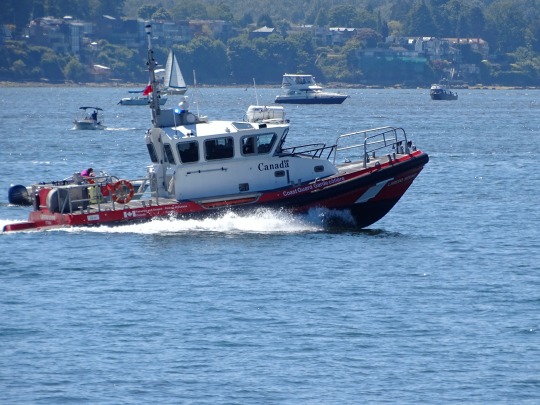
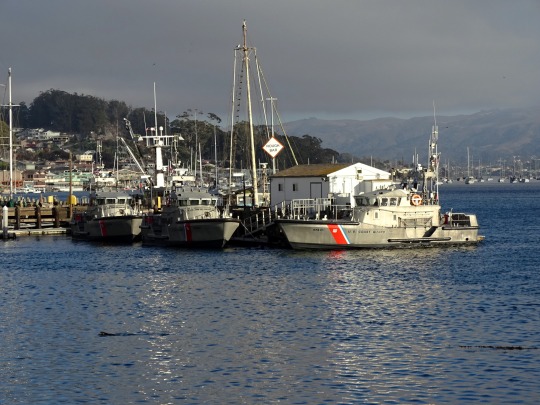
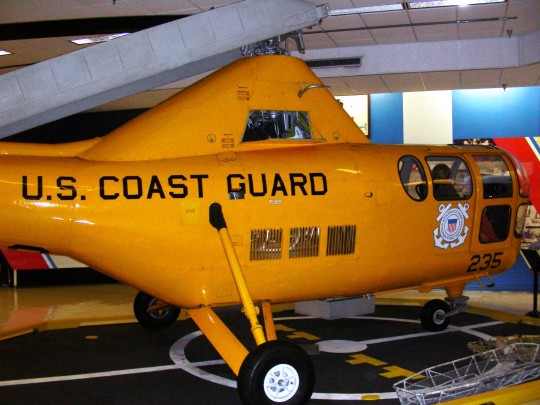
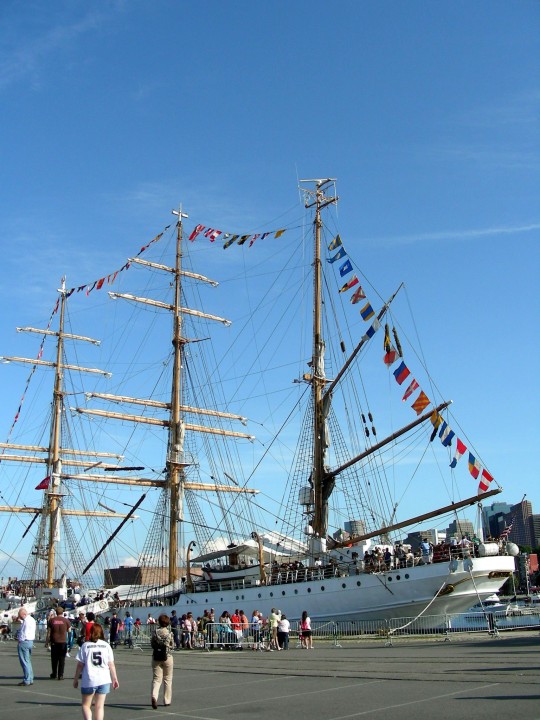
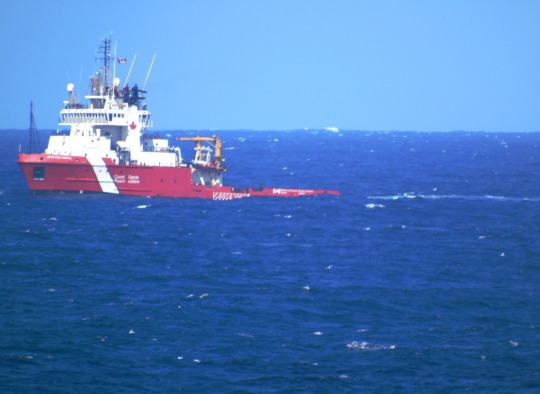
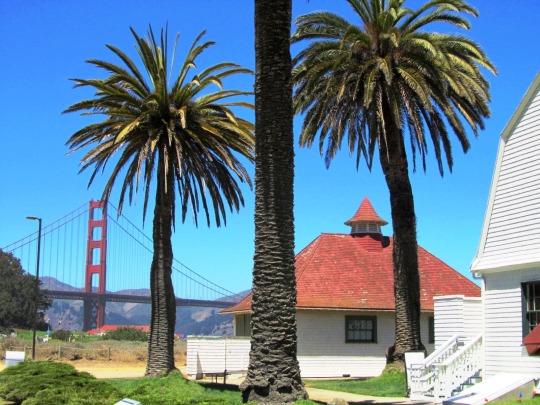
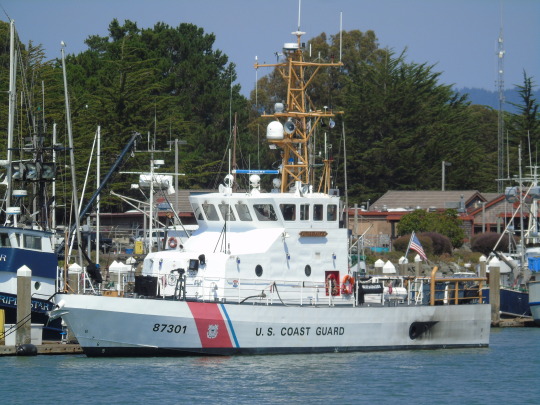


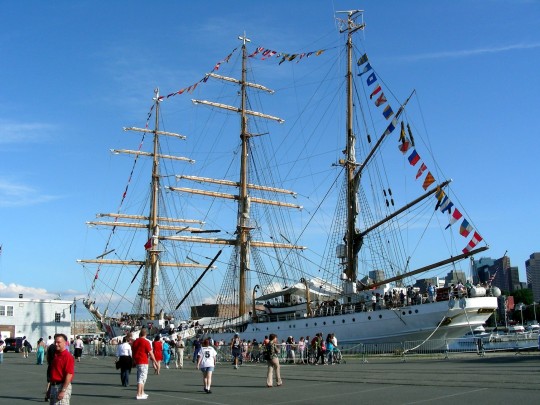



U.S. Coast Guard Day
U.S. Coast Guard Day honors the United States Coast Guard, the military branch that protects the waters and shorelines of the United States. It is celebrated on the anniversary of the founding of the Revenue Marine, the forerunner of the Coast Guard. On August 4, 1790, the United States Congress created the Revenue Marine and authorized the construction of 10 revenue cutters to be used to enforce U.S. tariff laws—to stop illegal smuggling and collect revenue on incoming goods. The Revenue Marine was housed in the Department of Treasury and thus directed by Secretary of Treasury Alexander Hamilton.
The Revenue Marine's name was later changed to the Revenue Cutter Service. Then, in 1915, the Revenue Cutter Service was combined with the United States Life-Saving Service to form the United States Coast Guard. This created a single maritime service, bringing together one devoted to enforcing maritime laws and one dedicated to saving lives. The United States Lighthouse Service became part of the Coast Guard in 1939, and the Bureau of Marine Inspection and Navigation became part of it in 1946. In 1967, the Coast Guard was transferred from the Department of Treasury to the newly-created Department of Transportation. Similarly, it was transferred to the Department of Homeland Security in 2003.
U.S. Coast Guard Day has been marked in some form since at least 1928. Presidents have proclaimed August 4th as "Coast Guard Day." Harry Truman did so in 1948, and Ronald Reagan did so in 1984 after being requested to do so by Congress. In large part, U.S. Coast Guard Day is an internal celebration by Coast Guard personnel and their families, but others join in honoring Coast Guard members as well. Coast Guard units often organize picnics and informal sports competitions, where they celebrate with family and friends. The American flag is typically flown on the day, particularly by those who have family members in the Coast Guard. Grand Haven, Michigan, known as Coast Guard City, USA, holds the annual Coast Guard Festival each year around August 4th.
The Coast Guard defines itself as "the principal Federal agency responsible for maritime safety, security, and environmental stewardship in U.S. ports and inland waterways, along more than 95,000 miles of U.S. coastline, throughout the 4.5 million square miles of U.S. Exclusive Economic Zone (EEZ), and on the high seas." It has active duty, reserve, and civilian employees, and there also is a Coast Guard Auxiliary. It is divided into two area commands, the Pacific Area and the Atlantic Area, and these are divided into nine district commands. Many Coast Guard stations are located in the districts. The Coast Guard fleet consists of cutters, boats, and fixed and rotary-wing aircraft. Today this branch of the military and its members are honored with U.S. Coast Guard Day!
How to Observe U.S. Coast Guard Day
Some ways you could observe the day include:
Make plans to attend New Haven's Coast Guard Festival, Petaluma's Coast Guard Day, or another public event in honor of the Coast Guard's founding. If you are a member of the Coast Guard, or if you have a relative in the Coast Guard, see if there are any private events being held in honor of the day that you can attend.
Stop at a Coast Guard station.
Fly the American flag.
Learn more about the responsibilities and functions of the Coast Guard. You could do so by reading a book such as The Coast Guard or The United States Coast Guard and National Defense: A History from World War I to the Present, or by exploring the official United States Coast Guard website.
Watch a film that features the Coast Guard.
Join the Coast Guard.
Source
#CCGS Laredo Sound#US Coast Guard 87301#U.S. Coast Guard Birthday#U.S. Coast Guard Day#Eureka#USCoastGuardDay#CCGS Sir Wilfrid Grenfell#Canada#Canadian Coast Guard#CCGS Placentia Hope#National Naval Aviation Museum#St. John's#Pensacola#St. Thomas#Charlotte Amalie#architecture#engineering#original photography#travel#vacation#tourist attraction#U.S. Coast Guard Barque Eagle#Boston#San Francisco#Golden Gate Bridge#4 August#4 August 1790#anniversary#USA#cityscape
3 notes
·
View notes
Text
The Battle of Actium, Part 3: Aftermath
Cleopatra was planning the next steps for defending Egypt; but Antony watched with despair the disintegration of his forces. The swift ships with which he had escaped caught up with Cleopatra's squadron, and he got aboard Cleopatra's flagship.

He went without a word to the prow of the ship, and sitting down, held his head in his hands like one who was dazed. He was still sitting there dumb and heartbroken, when night fell. Now Octavian had seen him go in pursuit of Cleopatra, and, supposing that he would presently come back, had at once dispatched two or three fast Liburnian galleys to attempt his capture while he was thus alone; and with them went a certain vessel which had been provided and fitted out by a man named Eurycles, a Spartan, who had placed himself and his ship at Octavian's service in order to be revenged upon Antony for having condemned his father, Lachares, to death for robbery- In the darkness these vessels came up with the Antonias and the escorting ships which, laden with Cleopatra's treasure and baggage, were sailing by her side; and at this Antony rose to his feet, and called out: "Who is this that wants Antony?" Across the water came the reply: "I am Eurycles, son of Lachares, armed with the warrant of Gaius Octavian's fortune to revenge my father's death.” Antony gave the order to turn about and face the danger, and at this the Liburnian ships drew off in fear, only the vessel of Eurycles keeping to its course. For a moment this man was seen standing at the prow, holding aloft a spear which he was about to hurl at Antony, who faced him; but suddenly the ship collided with one of the Egyptian vessels, and both drifted away into the darkness, locked together. The Antonias then continued on her way, and Antony resumed his seat in the prow.
The sun rose and found him haggard and unkempt. His two servants brought him food, but if he ate at all he did not know what he ate. The third night ensued, and during the next day they sailed across the Gulf of Messeniacus (Kalamata), and that evening reached Cape Taenarium, the southernmost point of Greece. Here a halt had to be made in order to obtain supplies and fresh water; and at last, Iras and Charmion persuaded Antony to join Cleopatra.
During the day two or three ships came in, bringing refugees from Actium and news of the results of the battle- Octavian had been victorious, they said; and at four o'clock in the afternoon, about two hours after Antony had left, the fleet had given up the fight and had surrendered, although not more than five thousand men had lost their lives, and few ships had been sunk. Including the transports and other shipping in the Gulf, about three hundred vessels had passed into Octavian's hands, of which the best part of two hundred were powerful men-o-war by no means seriously damaged. Antony's informants told him that only a few of the officers knew that he had deserted them and many of those to whom these had given the news had refused to believe it, supposing, rather, that he had been killed or had gone away on important business and would presently return- The army, it seemed was standing firm, and was preparing to march inland. At this Antony dispatched messengers to his generals, telling them to lead the troops eastwards through Macedonia and Thrace into Asia Minor; but he had no hope that these orders would be carried out. Long before they could reach the army, his desertion would have been apparent to all, and there would have been a general capitulation. It was too late for him to go back himself: he would almost certainly be captured and put to death. Nor had he any desire to continue the war or to sacrifice any more lives in the cause of a leader so worthless as himself. The Queen's mind, it is true, was already full of plans for defending herself in Egypt; but he himself could not think so far ahead as this. He wanted, for very shame, to die; and no one who has studied his face in the Vatican bust, and has observed the sensitiveness of his mouth, will fail to appreciate the agony of his humiliation.
Amongst the refugees there were several senators and officers, and to these he offered a large sum of money and numerous plates and dishes of gold which Cleopatra had told him he might use for this purpose; but "they refused his kindness with tears in their eyes, and he, on his part, comforted them with all the goodness and consideration imaginable, begging them to leave him, and writing letters on their behalf to his steward at Corinth that he would provide for their safety and keep them concealed till such time as they could make their peace with Octavian." There were two men, however, who elected to go with him across the sea: one was a Greek professor of oratory, named Aristocrates, and the other was that Roman officer, Lucilius, who, after the battle of Philippi, had pretended to be Brutus to save his defeated general's life, as already recorded and who had been forgiven for his deception and spared by Antony.
He had sailed from Taenarum south to Cyrene, where five legions had been stationed under Lucius Pinarius Scarpus, Caesar's nephew and Antony's legate at Philippi, to protect northeast Africa. The soldiers had turned against Scarpus and were now under Cornelius Gallus, Octavian's man. Their hope of veteran land allotments in Italy lay with the winner. And their loyalty did not lie with Egypt against Rome. Only those who feared for their personal safety under Octavian and those who felt a rare loyalty in friendship remained with Antony. As Antony took stock in the Egyptian port of Paraetonium, his despair was so great that he tried suicide but was stopped by two loyal followers. It was a small contingent that sailed with him to Alexandria.
Sources: Plutarch's Life of Antony
Cassius Dio, Roman History, Vol. V, Book: 50
Eleanor Goltz Huzar, Mark Antony-A Biography
Arthur Weigall, The Life & Times of Mark Antony
Painting: The Flight of Antony and Cleopatra from the Battle of Actium, Agnes Pringle.
#mark antony#marc antony#marcus antonius#cleopatra#cleopatra vii#antony and cleopatra#ancient rome#rome#roman history#roman republic#roman empire#ancient history#ptolemaic egypt#ancient egypt#egypt#octavian#caesar augustus#augustus
8 notes
·
View notes
Text
Sounding out the naval barge on Seneca Lake
By Jonathan Monfiletto
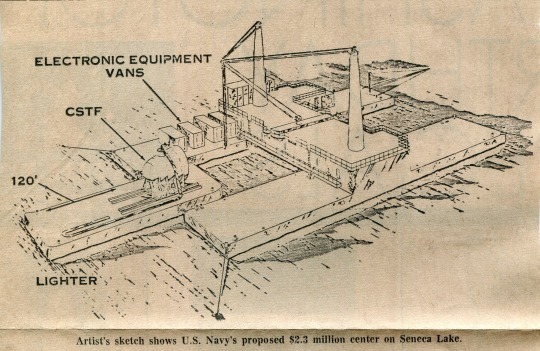
The next time you are driving along Seneca Lake, on State Route 414 along the eastern shore or – if you are traveling through Yates County – State Route 14 along the western shore, gaze into the middle of the lake and see if you find an interesting-looking platform floating on the surface. It shouldn’t be too hard to find, but you might wonder just what you are looking at.
This platform is, in fact, a barge anchored in the middle of Seneca Lake off the shore at Dresden. Indeed, the operation is officially known as the Seneca Lake Sonar Test Facility under the auspices of the Naval Sea Systems Command and the Naval Undersea Warfare Center of Newport, Rhode Island. Though it appears only civilian employees work there and no military personnel are stationed there, one could say this facility represents the only presence of the U.S. Navy existing in the Finger Lakes.
According to its website, the Seneca Lake Sonar Test Facility does just that – performing tests and evaluations of equipment to include sonar arrays and systems – and is known for its massive lift and power capabilities. Acoustic testing professionals carry out tests on systems and equipment of all sizes, even an entire sonar suite mounted in its sonar compartment.
Because it is a deep freshwater lake that is open all year, Seneca Lake is the Navy’s primary site for active instrumented calibration and testing. The fairly constant and predictable weather and water conditions of Seneca Lake also make it a choice testing site. It is known for its testing and evaluation of major projects that require relatively deep water with fixed underwater geometry and capabilities for heavy load-handling and electrical power.
Located about a mile and a half from the Dresden shore, the facility consists of two barges – the Systems Measurement Platform and the Remote Calibration Platform – that are the primary measurement and calibration resources. Two equipment-handling barges and numerous transport boats serve the facility, and there are machining and fabrication capabilities on the site to repair or manufacture the equipment and gear being tested.
The facility has been used by the Department of Defense, Department of the Navy, universities, foreign governments, state and local agencies, and private industry. And it has been a part of the Dresden landscape and lakeshore for more than 60 years.
It all began in November 1961, when the original barge – a converted oil tanker measuring 165 feet long and 36 feet long – arrived in Seneca Lake from Miami, via the inland waterway, Hudson River, and Barge Canal. During the heyday of the Cold War, as America furthered its research and development of anti-submarine warfare, the barge was purposed to test advanced sonar equipment designed to detect underwater craft. The barge was a key unit in establishing an anti-submarine acoustics research facility, headed by General Dynamics/Electronics.
The company leased a site at Dresden that provided 180 feet of lakefront – with construction of docking and service facilities to begin soon, according to an October 1961 newspaper article – along with a county road serving the property that would allow access to the facility throughout the year. Seneca Lake was chosen because its 600-foot depth makes it one of the deepest lakes in the country and – with the exception of the Great Lakes – the deepest lake with direct access to the Atlantic Ocean. It also has temperature gradients similar to those in the Atlantic Ocean, meaning sonar tests could be correlated to ocean conditions. The waves on the lake aren’t high enough to interfere with barge operations, and since the lake rarely freezes tests can be conducted throughout the year.
The original barge was equipped with a diesel-driven, 200-kilowatt generator to supply electric power to its electronic equipment, a capacity that was later increased to 400 kilowatts. The barge’s hulls had several ballast tanks, with water pumped out of or into the tanks to raise or lower the height of the deck above water.
Initially, the barge was designed to test then-recently-developed transducers weighing as much as 35 tons. These transducers convert electrical energy into acoustic energy, sending sound signals through the water that bounce off an intended target with an echo that can be recorded and analyzed. For test operations, the barge was to be manned by three engineers working under the direction of a manager.
In 1965, the Navy began leasing the Dresden Marina – with 4.5 acres of land and 900 feet of lakefront – for $20,000 per year with an option to buy the marina for $125,000. As a result of this move, owners of boats and crafts docked at the marina were forced to remove them from the marina and find new facilities to store them. Those with mobile homes located on the hill above the docks also had to vacate the premises. Another result was the Navy expanding its research facilities on Seneca Lake through an investment of $500,000. The improvements included completely fencing in the installation since much of its research work dealing with sound and sonar equipment is classified.
An undated newspaper article – handwritten with “1967,” though the exact date is unclear – indicates the Navy bought the marina a couple of years later for $166,000 and took it over outright. That year, Albert Gatthardt, of the Washington Naval Research Center, spoke before a jointing meeting of the Seneca Falls and Waterloo Rotary Clubs and detailed the history of the Naval Research Laboratory and its recent developments and improvements.
Alternately known as the Seneca Underwater Test and Evaluation Center, the facility was profiled in a July 1968 newspaper article on the occasion of the barge’s conversion from diesel power generated aboard to being powered by an electrical cable from the shore. The change permitted the barge – referred to in the article as DARIUS, though it is unclear what that stands for – to test the largest underwater sonar sound sources.
The following year, the Navy announced a $2.2 million expansion of the research facility on Seneca Lake, making it “the newest, largest, and best underwater research center in the country.” Plans called for using the existing barges plus a new systems measurement platform measuring 195 feet long, 120 feet wide, and 9 and a half feet deep, with a crane capable of lifting 200 tons. The expansion would continue the Navy’s research into sound transmission, travel, and reception underwater, light transmission and reception, underwater radio communications, development of new oceanographic tools and techniques, and underwater tests in the field physics.
As of February 1969, the facility employed eight permanent employees – a number expanded by 10 or 20 visiting technicians, engineers, and scientists. With the expansion anticipated to finish in the summer of 1970, plans called for 15 permanent employees with a capacity for 40 people visiting and working on the site.
By September 1970, work on the expansion had fallen behind but was mostly complete, and the facility continued testing equipment on Seneca Lake. More than 50 years later, the Navy still has a presence in the Finger Lakes, and it is one you can see from the road or the shore.

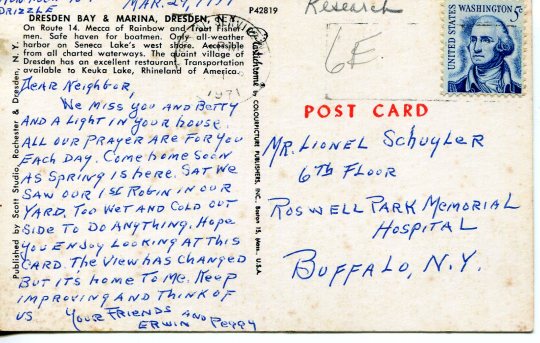
#history#historyblog#local history#american history#us history#yatescounty#newyork#dresdenny#navy#usnavy
2 notes
·
View notes
Text

Focal Shipping: Diversified Shipping Agency In 2023
Focal Shipping is a diversified shipping agency providing a wide range of services including Ship Agency, Logistics, Inland Transport, Customs Clearance, Supplier Enterprises, Ship Broking/Chartering, and Pot Inspection/Survey. We have a team of experienced professionals dedicated to providing reliable and efficient PlayStation solutions to our clients. Contact us today for further information.
2 notes
·
View notes
Text
Heavy Lift Cargo: Powering the Movement of Giant Loads
In industries like oil & gas, construction, aerospace, and mining, transporting oversized and overweight cargo is a massive challenge. That’s where heavy lift cargo services come in — offering specialized equipment, expertise, and logistics support to move the seemingly immovable.
For businesses handling massive machinery or abnormal loads, finding the best heavy lift cargo service in India is crucial to ensure safe, efficient, and cost-effective transport.
What is Heavy Lift Cargo?
Heavy lift cargo refers to freight that exceeds the standard size and weight limitations of regular transportation. These loads often require cranes, multi-axle trailers, hydraulic jacks, barges, and custom-engineered solutions for handling, loading, and delivery.
Examples of Heavy Lift Cargo:
Wind turbine components
Transformers and generators
Industrial boilers
Oil drilling equipment
Large construction vehicles
Aircraft parts
Modes of Transport for Heavy Lift Cargo
Road Transport – Specialized trailers and multi-axle vehicles
Rail Transport – High-capacity wagons for inland movement
Ocean Freight – Breakbulk or containerized solutions via heavy-lift ships
Air Freight – Rare, but used for time-sensitive, high-value equipment
Why Expertise Matters in Heavy Lift Logistics
Moving heavy lift cargo isn't just about strength—it’s about precision, planning, and compliance. Even minor miscalculations in load distribution or route planning can lead to major safety hazards.
Key Services Involved:
Route surveys & feasibility studies
Custom crating and packaging
Crane operations & rigging services
Road and port permits
Escort vehicles and civil works
🇮🇳 Choosing the Best Heavy Lift Cargo Service in India
India’s infrastructure and industrial boom have created high demand for specialized logistics providers. To find the best heavy lift cargo service in India, you need to evaluate companies based on:
What to Look For:
Track Record in Handling ODC (Over Dimensional Cargo)
Fleet of Modern Equipment – Cranes, trailers, self-propelled modular transporters (SPMTs)
Safety Standards and Certifications
Pan-India and Global Reach
On-time Delivery Record
24/7 Project Management Support
Top Heavy Lift Cargo Companies in India
Here are some leading providers known for excellence in heavy cargo logistics:
Larsen & Toubro (L&T) Heavy Engineering
Allcargo Logistics Ltd
J.M. Baxi Heavy
Lift & Shift India Pvt Ltd
Express Global Logistics (EXG)
ABC India Ltd
Total Movements Pvt Ltd
These companies are equipped to handle complex projects and are often trusted by sectors like power, defense, infrastructure, and aviation.
Real-World Applications
Transporting a 250-ton generator from a manufacturing site in Gujarat to a hydropower project in Himachal Pradesh.
Delivering wind turbine blades over 60 meters long across challenging terrains.
Exporting refinery columns from India to the Middle East via breakbulk vessels.
Final Thoughts
Heavy lift cargo logistics is a niche that demands engineering excellence, precision planning, and zero tolerance for errors. The best heavy lift cargo service in India will combine cutting-edge technology with decades of hands-on experience to ensure safe and seamless project execution.
Whether you’re moving a 500-ton transformer across the country or shipping massive industrial machinery overseas, the right logistics partner will make all the difference.
0 notes
Text
Choose Zipaworld for Inland Transport Solutions
Zipaworld offers comprehensive inland transport solutions, ensuring your goods are moved across the country securely and efficiently. Inland transport is a smart choice because it's cost-effective, enhances efficiency, and provides greater accessibility. Our services encompass railways, roads, and inland waterways, allowing us to manage your cargo's journey from pick-up to delivery.
Trust Zipaworld to handle all your inland transport requirements and get a free quote today.

#inland transport#comprehensive transport solutions#secure cargo transport#efficient goods delivery#cost-effective transport#rail transport services#road transport services#inland waterways#cargo management#pick-up to delivery services#transport logistics#Zipaworld services#free transport quote
0 notes